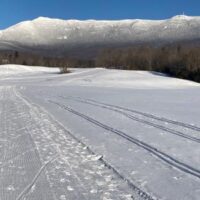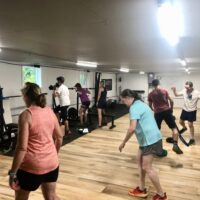Mansfield Nordic Club Head Coach Responsibilities
Mansfield Nordic Club Masters program includes coached training sessions twice weekly on Tuesdays and Thursdays from the beginning of December through mid March. Masters skiers may choose between the early session 4:00 PM – 5:30 PM and late session 6:00 – 7:30. Masters may also participate in weekend events including one day training “mini” camps, races and group ski/tours. These weekend events, when possible, are coach guided. Ideally, the Masters Head Coach would be able to be involved one day on most weekends to organize and be present at these events. However, as outlined in the below description, we will also consider candidates who are not available on weekends.
Tuesday/Thursday sessions are primarily held at the Ethan Allen Firing Range in Jericho VT which is run by the Vermont National Guard. However, due the snow conditions or conflicts with other National Guard use, training sessions are sometimes moved to other locations in the area including Sleepy Hollow Nordic in Huntington, VT. Coaches must have flexibility in adapting to different locations.
Required Responsibilities
Be the ‘go to’ person for overall Masters Training – take over organization of training sessions, report to BOD at 3 yearly meetings (usually fall winter and spring).
Recruiting and organizing the scheduling of masters coaches pre season.
Lesson plans for Tues Thurs sessions. Post practice plans on website, make changes as necessary and communicate these to masters.
Periodically post other info or reports for Masters on the MNC website.
Respond to emails from master skiers regarding registration, equipment, wax, program, etc.
Coach one session, oversee other session OR coach both sessions. Could coach early session and then stay for the start of later session to meet skiers, help skiers and coaches organize into groups – not stay for whole later session – just the start of it.
Have familiarity with all masters skiers, their abilities and goals, even if you are not directly coaching them on Tues/Thurs.
Communication and organization of master’s coaches during season – Assign coaches to groups, Assign skiers to appropriate groups. First few practices of season will need more organization, then it should fall more into place.
Decide on, and announce to coaches and masters, alternate locations and plans, should Range be not available for whatever reason.
If no snow in Dec (or any other time during winter), organize dryland practices and locations for early and late masters sessions.
Optional Responsibilities (preferred but not mandatory)
Organize early season dry land training – Oct-Nov.
Organize masters Mini training camps – ½ day camps on weekend at least once (early Dec) hopefully twice during season.
Support Skiers who wish to race with wax help (verbal – not necessarily physically waxing for them) for upcoming races.
Attend several key races (could pick the closer locations such as Craftsbury and MNC Skiathlon) help with waxing, and skier support.
Organize and participate in one or more weekend ski tours. (Example: Highland Lodge to Craftsbury Outdoor Center)










